Electrical Junction Box : The Ultimate Guide to Choosing the Right One
Choosing the right electrical junction box is essential for the safety and efficiency of your electrical system. An electrical junction box is a protective enclosure used to house electrical connections, keeping them safe from external elements and preventing electrical hazards.
When selecting a junction box, consider the material. Plastic boxes are lightweight and easy to install, metal boxes offer durability and are ideal for exposed wiring, and fiberglass boxes provide a balance of both. Size and capacity are also crucial; ensure the box can accommodate all your wires and connections without overcrowding.
Using the right junction box ensures safety by protecting against electrical shocks and fire hazards, keeps wires organized, and enhances the durability of your electrical system. By considering material, size, IP rating, and installation needs, you can choose a junction box that fits your specific requirements and ensures a safe, efficient electrical setup.
Key Features for selection of Junction Box
Althought there are many features affecting the selection of junction boxes, but here we are explaining only major and important factors.
1) Material Of Electrical Junction Box
When choosing an electrical junction box, the material is very important. It affects how strong, safe, and suitable the box is for different places. Here’s a simple look at the materials used for junction boxes:
Thermo Plastic Junction Boxes
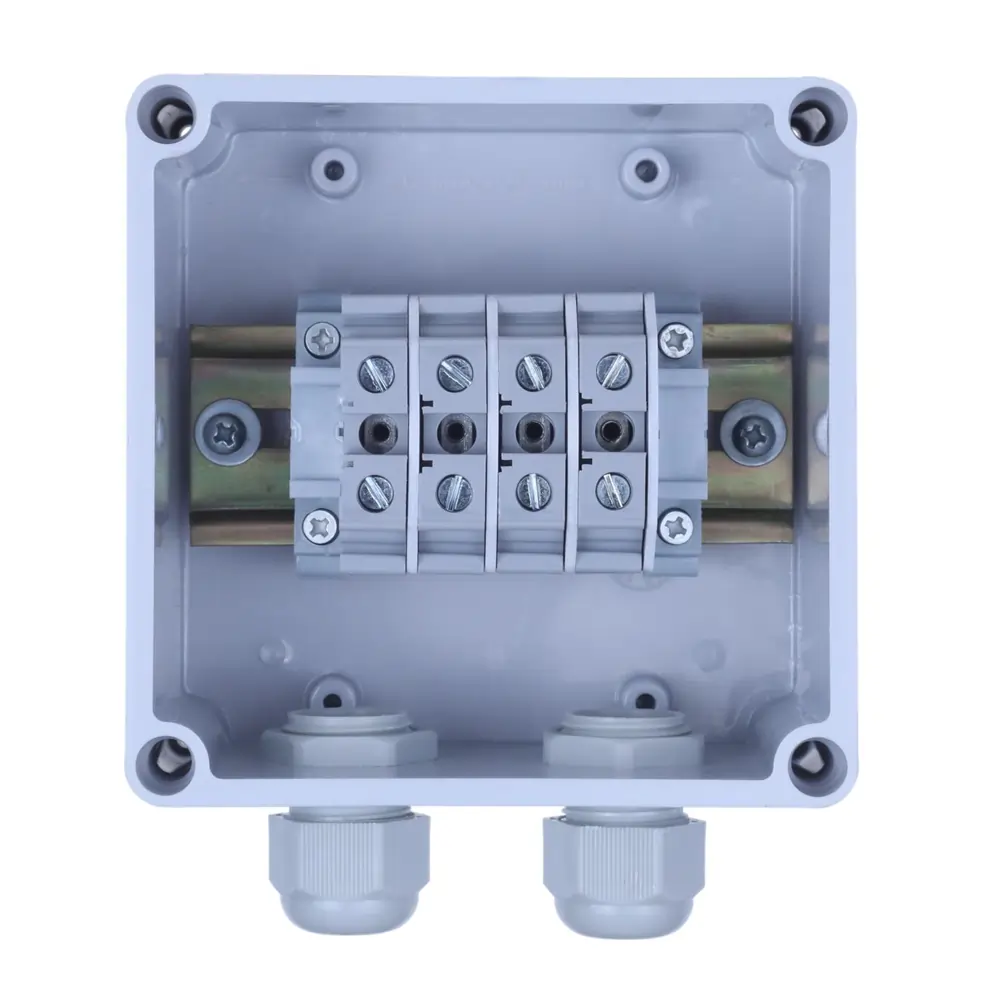
Thermo plastic electrical junction box are widely used in homes, indoor electrical systems, and light-duty jobs.
Advantages:
- Lightweight: Easy to handle and install.
- Cost Effective: Usually less expensive than metal,aluminium and stainless steel
- Non-Conductive: Provides good insulation, reducing the risk of electric shock. Also Suitable for outdoor with Good IP Ratings
Disadvantages:
- Less Strong: Not as durable as metal or stainless steel
- Heat Sensitive: Can melt or deform in very high temperatures above 70 Deg c
Metal Junction Boxes

Widely used in Factories, commercial buildings, and places needing extra durability and fire resistance.
Advantages:
- Very Durable: Can handle rough conditions and impacts.
- Fire Resistant: Doesn’t burn, adding protection against fires.
- Good Grounding: Essential for some electrical systems.
Disadvantages:
- Heavy: Harder to install because of the weight.
- More Expensive: Costs more than plastic.
- Conductive: Needs proper grounding to be safe.
Stainless Steel Junction Boxes
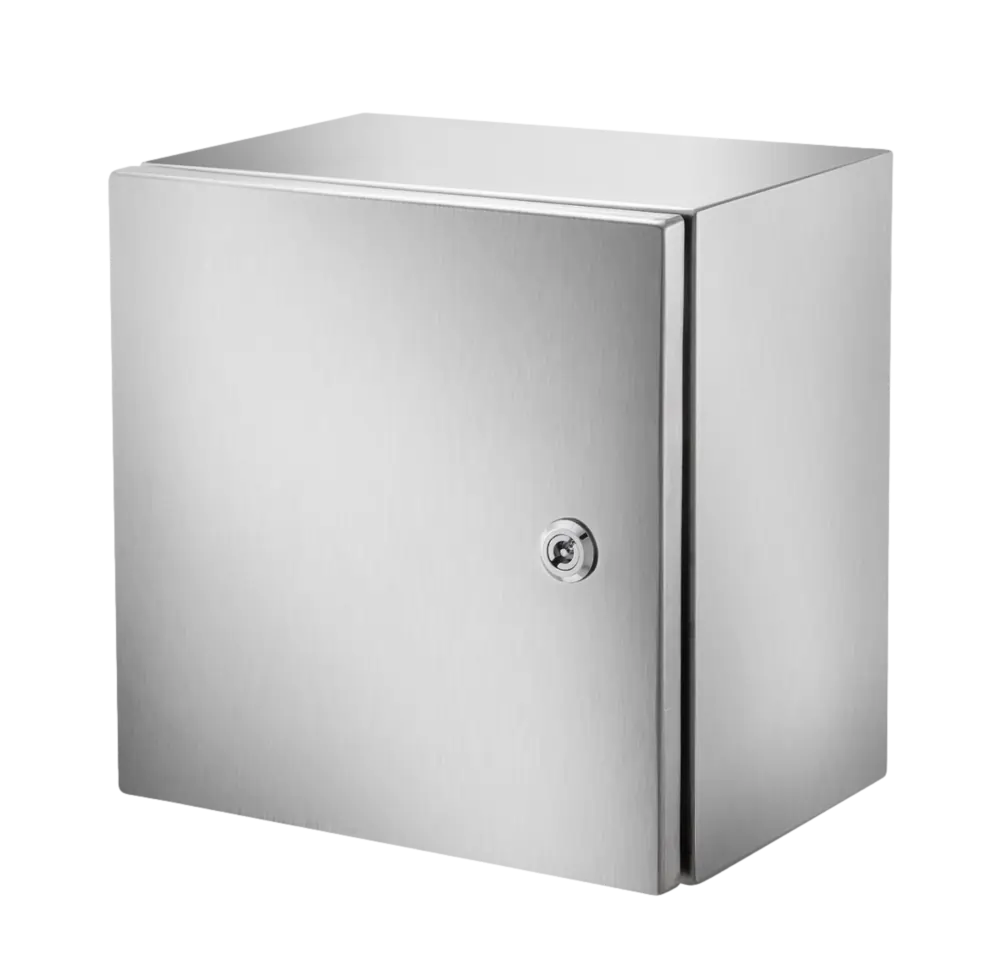
Widely used in Food industry, pharmaceutical plants, and harsh outdoor environments.
Advantages:
- Very Strong: Highly resistant to rust, impact, and tough weather.
- Looks Good: Shiny and clean, good for visible installations.
- Easy to Clean: Perfect for food and pharmaceutical industries.
Disadvantages:
- Very Expensive: One of the costliest materials.
- Heavy: Harder to install due to weight.
- Conductive: Needs proper grounding to be safe.
2) Size and Capacity of Electrical Junction Boxes
When choosing an electrical junction box, size and capacity are crucial to ensure all wires fit comfortably and safely. Here’s a simple breakdown:
Small Junction Boxes
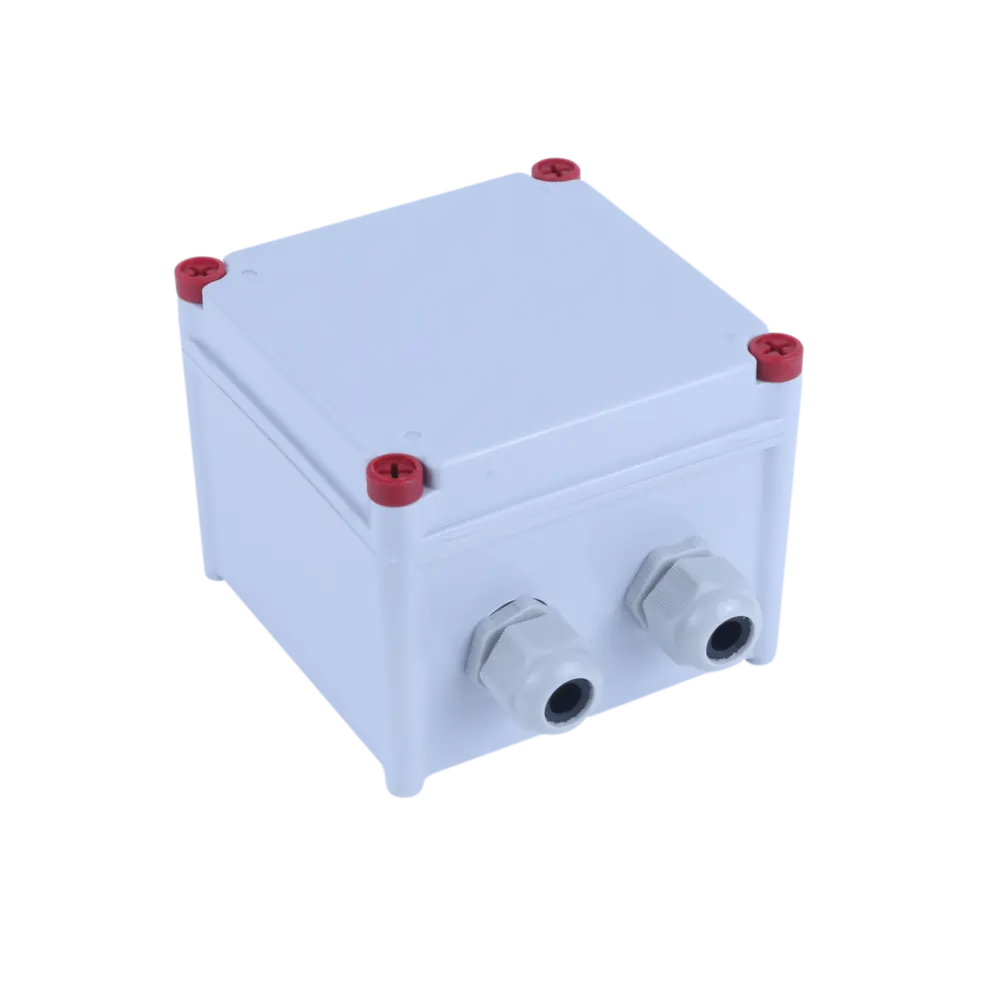
- Size: About 2″ x 3″ or 3″ x 3″.
- Capacity: Holds a few wires like 4 cables up to 4 sqmm, suitable for simple connections.
- Mostly Terminals upto 4 Sqmm
- Uses: Light switches, single outlets, basic home wiring.
Medium Junction Boxes
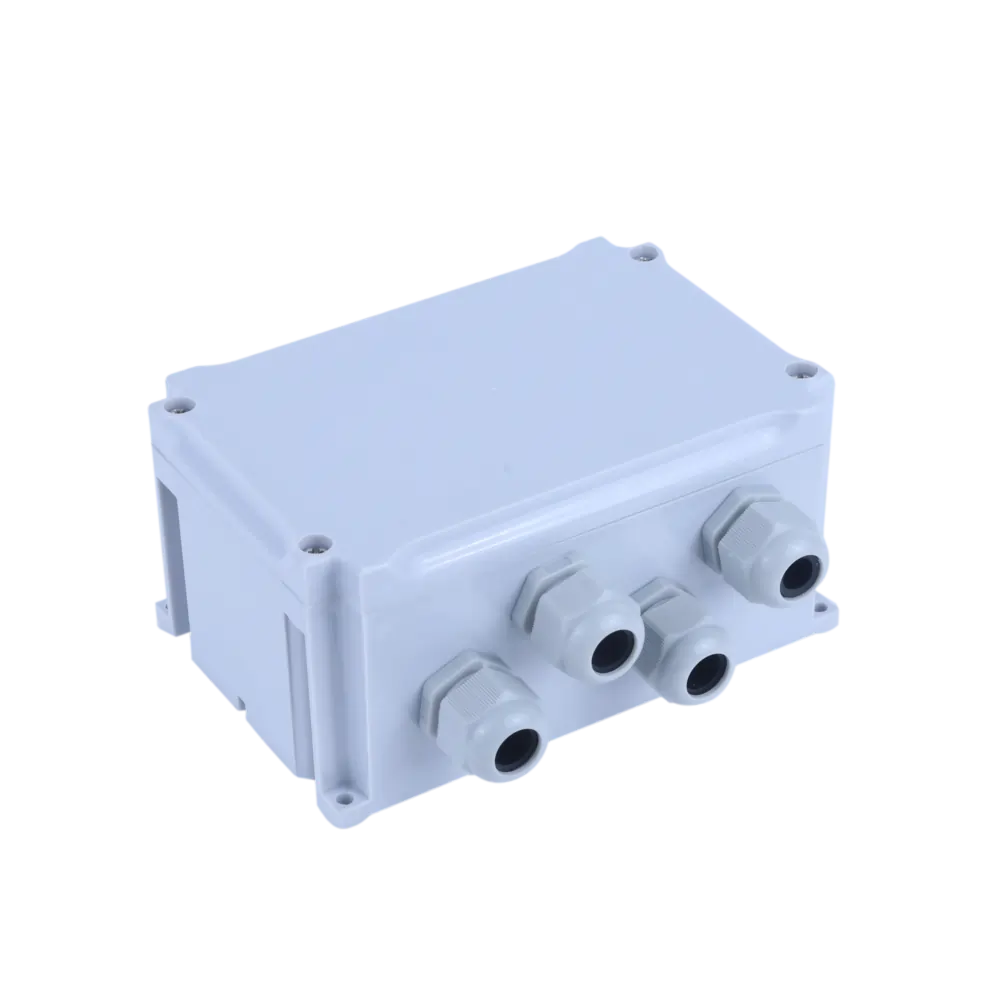
- Size: Around 4″ x 4″ or 4″ x 6″.
- Capacity: Holds more wires like 8 cables up to 4 sqmm and connectors.
- Mostly Terminals upto 10 Sqmm
- Uses: Multiple outlets, light fixtures, small appliances.
Large Junction Boxes
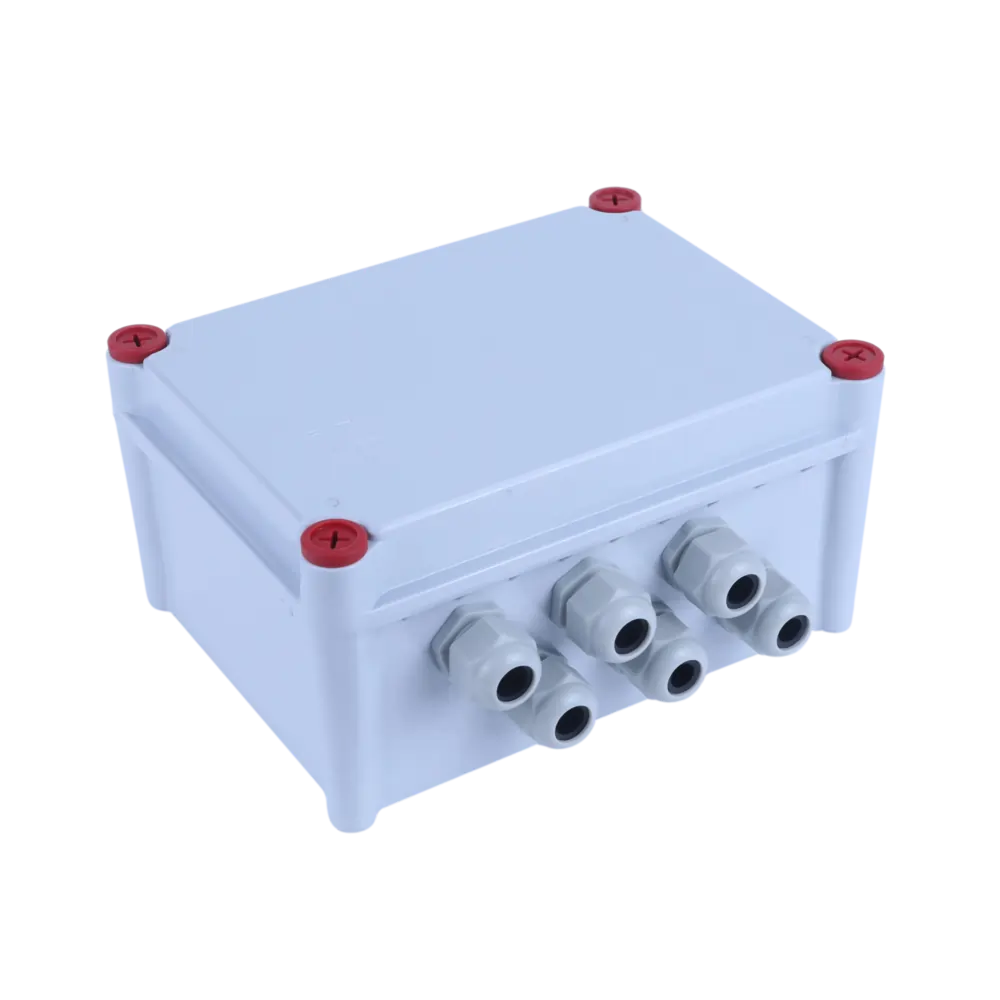
- Size: Sizes like 6″ x 6″ or 8″ x 8″.
- Capacity: Holds a large number of wires and connectors like more than 10 cables above 4 sqmm.
- Mostly Terminals up to 16 Sqmm
- Uses: Main electrical panels, large appliances, complex wiring.
3) Cable Entry and Cable Gland Selection
Cable entry is where cables go into the junction box. It needs to be secure to protect the wires inside from dust, water, and damage.
Cable glands hold and seal cables entering the box, keeping out dust and water and preventing cable strain.
How to Choose Cable Glands
- Cable Diameter: Match the gland size to your cable size for a snug fit.
- Material: Plastic, metal, Brass are widely used as per applications.
- IP Ratings: Most of cable glands in the current market is IP65 and IP67. In practicle most of IP67 Cable glands fails during IP67 Tests. We recommend to check before finalizing IP67 Requirements.
Number of Cable Entry
- 2 way, 4 way, 6 way, 8 way , these are common names for the number of entries in the junction boxes.
- Based on the layout direction or the position of the cable entry is selected. We mostly recommend to use bottom side only for cable entry for outside applications. Rain water may lead to entry the enclosure through cable in case top or side entries.
4) IP Rating or Waterproof Requirements
IP (Ingress Protection) rating indicates how well an electrical junction box is protected against dust and water. This rating is most important when junction is installed at outdoor applications.
Common IP Ratings for Junction Boxes
- IP54: Protection against limited dust ingress and water splashes.
- IP65: Dust-tight and protected against water jets.
- IP66: Dust-tight and protected against powerful water jets.
- IP67: Dust-tight and protected against immersion up to 1 meter.
- IP68: Dust-tight and protected against long periods of immersion under pressure.
5) Other Factors for selection of Electrical Junction Box
Terminal Size and Selections
Selection of terminals depends on the size of the cable in the junction box. We recommend to use one or two size larger than the cable size. For example 4 sqmm terminal should be used for cable up to 2.5 sqmm. Incase of the looping of two cable of 2.5sqmm, we recommend to use atleast 10Sqmm terminals. End plate of the terminals are optional but recommended for medium and larger size junction boxes.
UL Ratings and Fire Proof
When selecting junction boxes, ensure they have the appropriate UL rating and meet fire retardant requirements
- UL Rating: Ensures safety and compliance. Look for UL Listed or UL Recognized labels.
- Fire Retardant: Check for materials rated under UL 94, aiming for a V-0 rating for the best fire resistance.
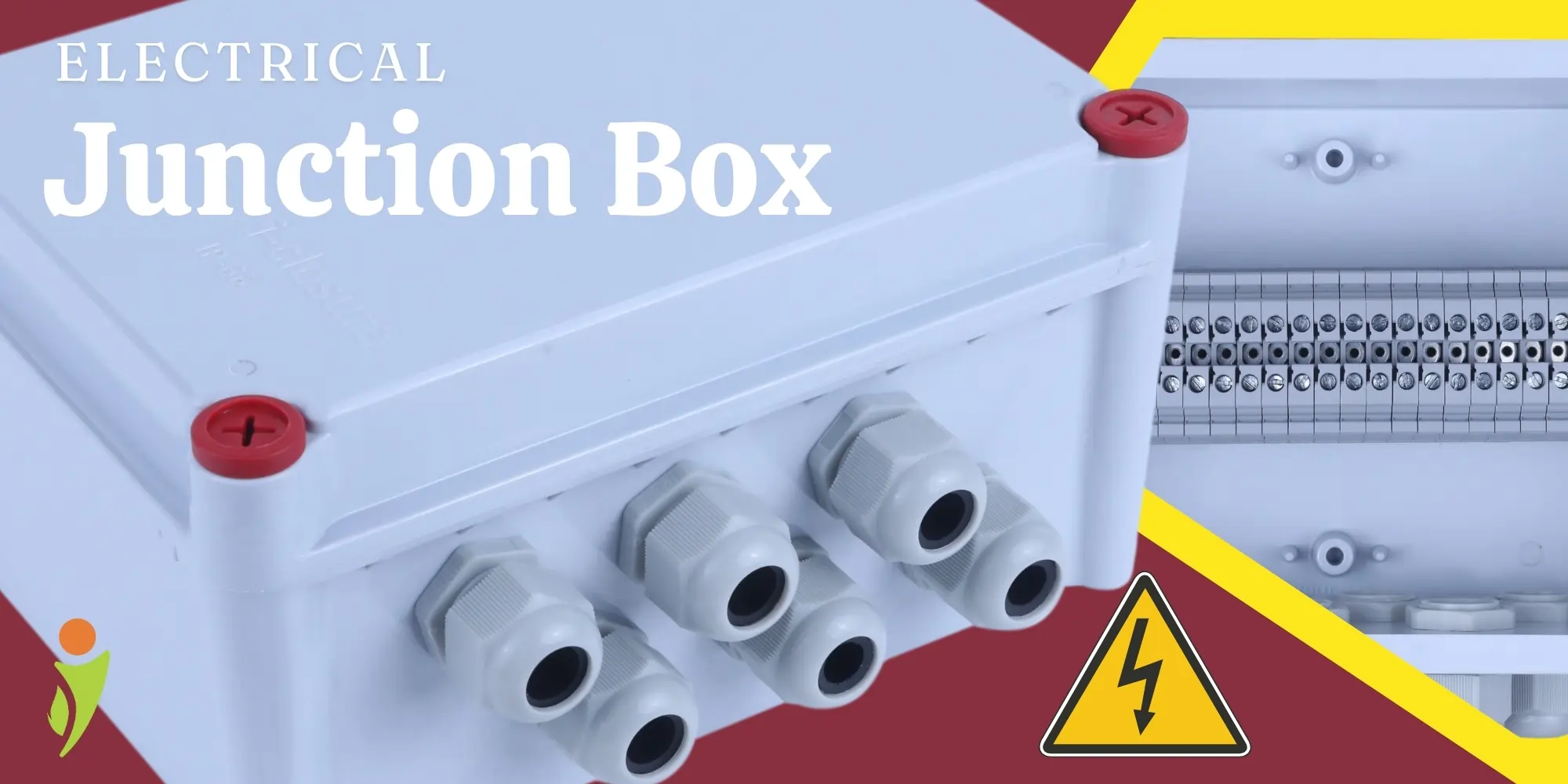
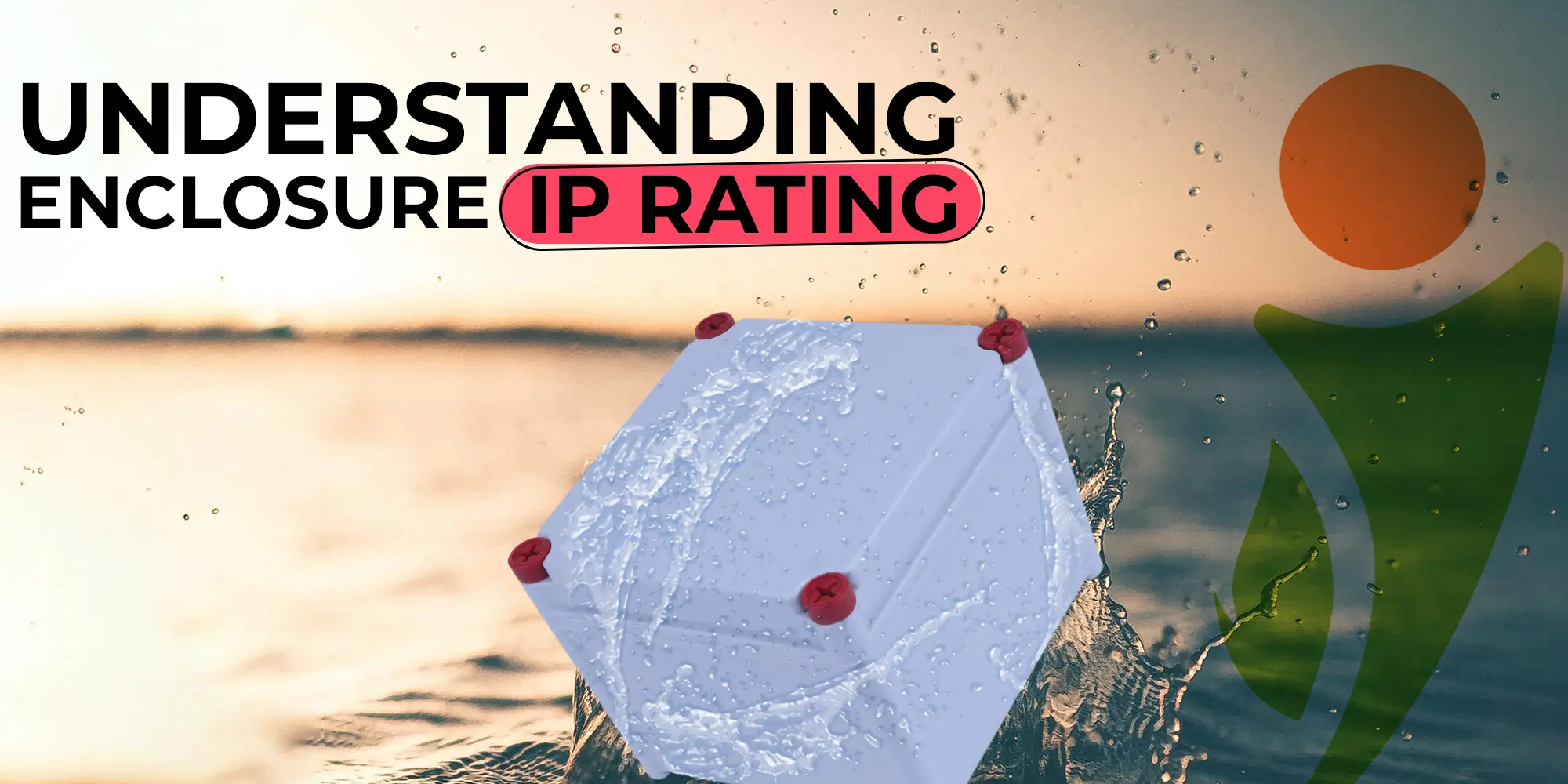
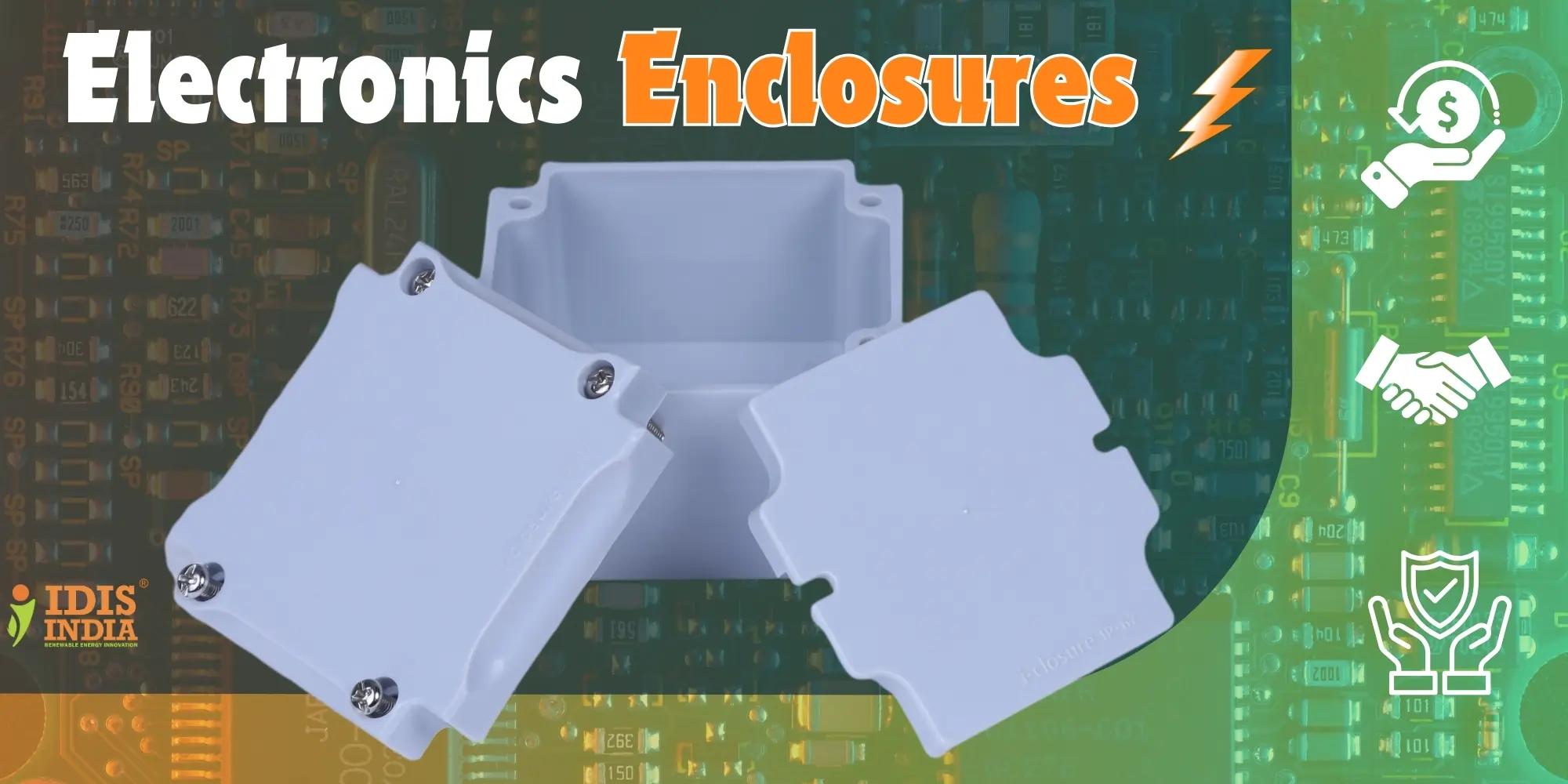

1 Comment
Really a very good information about choosing right
Electrical Junction Box .